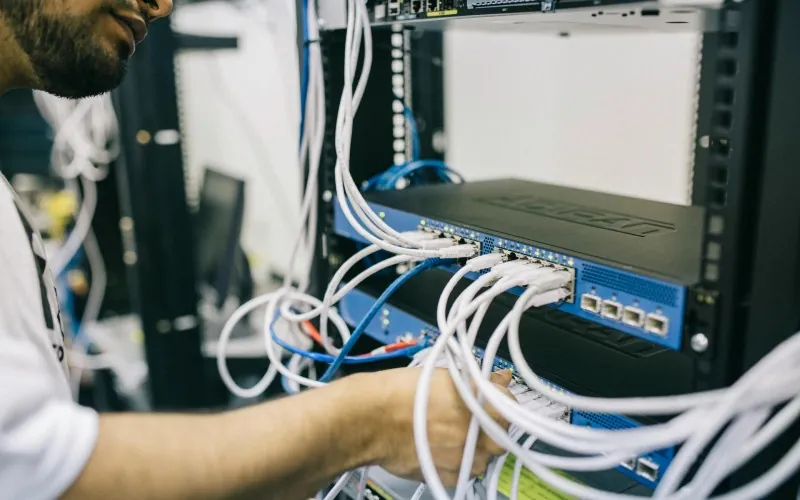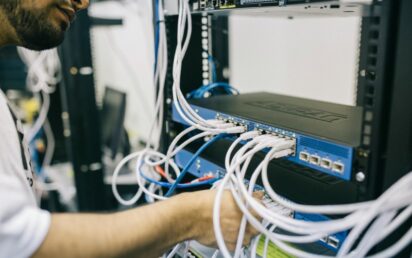Understanding the environmental footprint of your IT supply chain is crucial in today’s eco-aware business landscape. Companies are increasingly under pressure to reduce their carbon footprint, especially in relation to technology and infrastructure. This article guides you on assessing and mitigating the environmental impact of your IT operations, as well as introduces you to the option of buying refurbished hardware to increase your level of sustainability.
Identifying Environmental Challenges in IT Supply Chains
The IT supply chain can significantly affect the environment, from resource extraction to manufacturing and disposal. Understanding these impacts is essential for any business aiming to operate sustainably. A key step in assessing this impact involves analyzing your hardware choices, particularly with servers. Opting for a refurbished server can substantially lower your carbon footprint by reducing the need for new materials and energy-intensive manufacturing processes. Additionally, evaluating your entire supply chain, including transportation and logistics, allows you to identify areas where emissions can be minimized. Recognizing these challenges early on enables you to implement strategies that align with both business goals and sustainability commitments.
Another crucial aspect is understanding the impact of e-waste. As technology rapidly progresses, the disposal of outdated equipment becomes a significant concern. E-waste contains harmful materials that can leach into soil and water systems if not properly managed. Implementing a comprehensive e-waste management program as part of your IT supply chain strategy is essential. This includes partnering with certified recycling facilities, exploring buy-back programs, and educating employees about responsible disposal methods. By addressing the full lifecycle of IT products, from acquisition to disposal, companies can significantly reduce their environmental impact and contribute to a more sustainable tech ecosystem.
Evaluating Environmentally Friendly Procurement Practices
Sustainable procurement, which includes 2nd hand servers and other top-quality refurbished hardware, plays a vital role in reducing your IT supply chain’s environmental impact. By choosing suppliers who prioritize eco-friendly practices, you contribute to broader sustainability goals. This involves looking at the lifecycle of products, from production to end-of-life disposal, ensuring they adhere to green standards. Additionally, integrating second-hand servers into your procurement strategy not only supports recycling efforts but also offers cost benefits without sacrificing performance. It’s important to establish metrics for evaluating supplier sustainability practices to ensure alignment with your company’s values and objectives, much like a vision board that your company wants to achieve.
When evaluating environmentally friendly procurement practices, it’s also crucial to consider the role of software and cloud services. While physical hardware often takes center stage in sustainability discussions, the environmental impact of software development and cloud computing cannot be overlooked. Assess the energy efficiency of the software you use and the data centers that host your cloud services. Look for providers committed to using renewable energy sources and implementing energy-efficient algorithms. Additionally, consider the longevity and scalability of software solutions to reduce the need for frequent updates or replacements.
By incorporating these factors into your procurement strategy, you can further reduce your IT supply chain’s carbon footprint and promote sustainable practices across all aspects of your technology infrastructure. If you need assistance in this regard, there are companies like Renew Tech, formerly known as Kimbrer Computer, that offer refurbished IT systems and everything you need for your IT infrastructure. From spare parts in their parts guide and entire configurations to repair and maintenance service, you can do it all sustainably.
Implementing Energy-Saving Technologies
Energy efficiency should be at the forefront of any strategy aimed at reducing the environmental impact of IT operations. Transitioning to energy-saving technologies not only lowers operational costs but also reduces greenhouse gas emissions significantly. Consider implementing energy-efficient data centers that utilize advanced cooling systems and renewable energy sources. Using virtualization technologies can also optimize server usage and minimize energy consumption across your network infrastructure. When selecting IT equipment, prioritize models that have been certified for energy efficiency standards, as this will further decrease your overall environmental footprint.
Monitoring and Reporting Sustainability Efforts
Once sustainable practices are in place, continuous monitoring and transparent reporting are crucial for measuring success and identifying areas for improvement. Implementing robust tracking systems allows you to quantify reductions in energy usage and emissions effectively. Regular audits and assessments will help maintain accountability and drive continuous improvements within your IT supply chain. Sharing these results through sustainability reports not only builds credibility with stakeholders but also fosters a culture of transparency within your organization. Encouraging feedback from employees and partners can further enhance your strategies and lead to innovative solutions for reducing environmental impacts.


